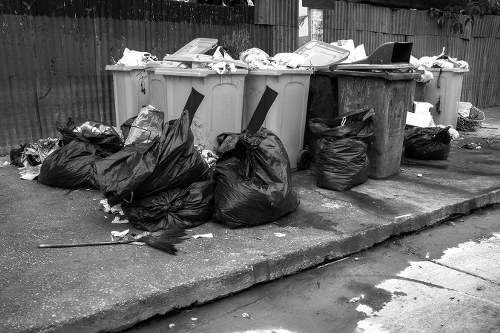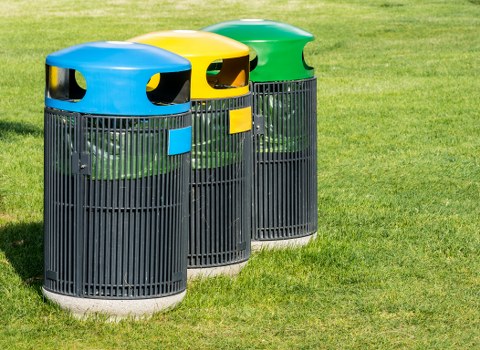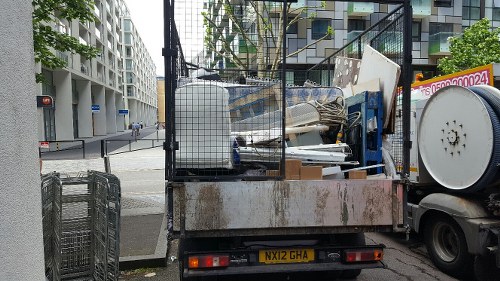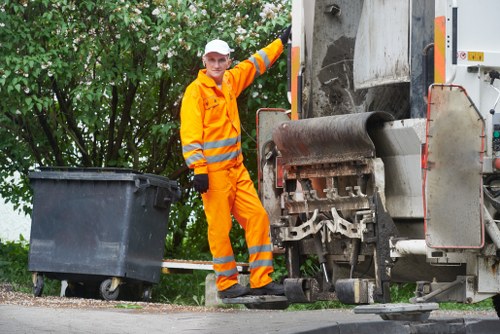Efficient Litter Clearance in Builders Waste: Strategies and Solutions

Welcome to the ultimate resource on effectively managing waste from construction sites. In today's fast-paced construction industry, litter clearance in builders waste has become an essential factor not only for maintaining healthy work environments but also for adhering to environmental and regulatory guidelines. As building projects grow in size and complexity, the need for a systematic approach to waste removal is more critical than ever. This article delves deeply into key methods, challenges, and technological trends surrounding builders waste management, ensuring you are well-equipped with the knowledge to address these issues head-on.
While construction sites naturally produce substantial debris and rubbish, addressing waste effectively can significantly boost project efficiency. Efficient waste clearance can lead to enhanced safety, streamlined operations, and an overall reduction in project costs. Today, companies are leveraging innovative solutions such as smart waste tracking systems and eco-friendly disposal practices. With strong ethical and business imperatives driving improvements in debris management, the focus on litter clearance in builders waste has transcended traditional cleanup methods to incorporate advanced planning, automated techniques, and rigorous quality checks.
The challenge of managing builders waste often extends beyond merely removing debris. It involves a comprehensive strategy that includes understanding regulatory frameworks, adopting sustainable practices, and implementing effective cost-control measures.

Understanding Litter Clearance in Builders Waste
Grasping the fundamentals of litter clearance in builders waste is crucial for anyone involved in construction projects. In this section, we explore how efficient waste management not only aids in maintaining an orderly job site but also plays a pivotal role in achieving sustainability goals. As waste accumulates, so do safety risks and potential environmental hazards, making it paramount that each site implements stringently organized clearance practices.
Builders waste clearance involves a series of organized, regulated, and often automated processes. The rise of environmentally conscious construction methods has resulted in notable improvements in the processes used to manage debris and refuse. Advanced removal technologies are increasingly being introduced on sites to ensure that waste does not accumulate to hazardous levels. Through rigorous monitoring and scheduled disposal, companies are setting a new benchmark in both safety performance and environmental stewardship.
Furthermore, an integral component of builders waste management is understanding the types of debris generated. Different materials, such as concrete, wood, metal, and plastics, require specialized handling and disposal procedures. By integrating expert waste segregation and recycling protocols, construction firms can optimize resource recovery and reduce overall disposal costs. Emphasizing these techniques leads to operational efficiency and boosts a company's image as a responsible, forward-thinking business.

Environmental and Regulatory Considerations
Regulatory Framework and Compliance
Construction waste treatment is not merely about logistics—it's equally about strict adherence to local, national, and international regulations. Governments worldwide have established guidelines to regulate builders waste disposal, aimed at reducing environmental degradation and promoting recycling. Failing to comply with these regulations can lead to severe penalties, project delays, and reputational damage. In many countries, comprehensive laws address noise, dust, and water pollution emanating from site waste, pushing companies to constantly innovate in their waste clearance strategies.
The regulatory environment surrounding litter clearance in builders waste is dynamic, with policies frequently updated to address emerging challenges. Even in regions with stringent rules, there is often a strong incentive to develop custom-tailored solutions for waste removal. Businesses are encouraged to invest in sustainable technologies that aid in waste segregation, facilitate recycling, and reduce environmental footprints. The synergy between regulatory pressure and technological advancements continues to prompt industry leaders to rethink traditional methods and adopt more progressive practices.
Compliance is not just a legal mandate—it is also an opportunity to drive change. Many construction firms are turning environmental challenges into competitive advantages by fostering robust waste management systems that align with corporate social responsibility goals. Adopting these practices means not only staying compliant but also boosting overall site safety, increasing worker productivity, and securing long-term cost savings through enhanced operational efficiency.

Effective Strategies and Solutions
Innovative Techniques for Waste Removal
With managers and stakeholders constantly seeking cost-effective and sustainable options, the modern techniques in builders waste management are evolving rapidly. From automated waste segregation systems to cutting-edge recycling methodologies, these innovative techniques support efficient litter clearance in builders waste while substantially reducing environmental impact. By utilizing modern equipment and digital protocols, companies can monitor waste levels in real-time, promptly addressing potential issues and optimizing removal schedules.
One of the most significant advances in the field is the integration of technology into waste management. Real-time tracking systems, remote sensors, and AI-driven analytics help predict waste production trends, thereby enabling preemptive removal schedules. This approach not only minimizes on-site hazards but also reduces unexpected delays. Moreover, incorporating these technological solutions reinforces a company's reputation as a leader in sustainable construction. Such a commitment to efficiency and environmental responsibility is indispensable in today's market.
Beyond technology, the successful management of builders waste involves a robust strategy that encompasses comprehensive planning and disciplined execution. Here are some key techniques that have proven effective:
- Pre-Planning and Segregation: Develop a site-specific waste management plan that identifies potential waste streams and determines the best removal methods tailored to the unique needs of your project.
- Scheduled Clearance Times: Establish fixed intervals for waste removal and ensure adherence to minimize accumulation on site.
- Employee Training: Regularly train staff on waste management protocols to ensure everyone is aligned with safety and environmental guidelines.
Cost Implications and Efficiency
The financial impact of efficient builders waste clearance extends far beyond simple disposal fees. Implementing a systematic waste clearance process can lead to significant cost savings by reducing overtime expenses, mitigating risks of accidents, and cutting down regulatory fines. Every construction project benefits from a well-thought-out waste management strategy, as it streamlines operations, prevents delays, and ultimately boosts the bottom line. Investors and regulators are particularly keen on understanding these cost implications and often favor companies with demonstrably efficient systems.
Maximizing Value Through Strategic Investments
Investments in advanced debris removal technologies and waste recycling initiatives not only signal a commitment to corporate social responsibility but can also substantially improve ROI. Construction companies and contractors are increasingly recognizing the value of investing in modern waste management solutions. These investments yield long-term benefits, offering opportunities for resource recovery, higher resale values of recycled materials, and enhanced market positioning as environmentally conscious organizations. Essentially, strategic investments in waste clearance technologies empower builders to achieve more with less, optimizing both operational efficiency and environmental stewardship.

Conclusion and Future Outlook
In conclusion, the significance of effective litter clearance in builders waste cannot be overstated. With the construction industry continually evolving, embracing sustainable and advanced waste management techniques is no longer optional—it is essential. By integrating innovative technologies, adhering to strict regulatory guidelines, and promoting a culture of proactive waste management, businesses can not only enhance site safety and operational efficiency but also bolster their corporate image in an increasingly environmentally conscious market.
Looking to the future, the evolution of builders waste clearance will be driven by further technological advancements and a global commitment to sustainability. As new solutions emerge, construction companies are encouraged to adopt best practices that ensure competitive advantages while safeguarding the environment. The ongoing integration of digital monitoring tools, automated processes, and comprehensive planning is set to redefine waste management strategies in construction, paving the way for a more efficient and eco-friendly industry.
This article has provided a thorough exploration of effective methods, emerging technologies, and insightful strategies focused on litter clearance in builders waste. Now is the time to implement these recommendations and witness transformative changes on your construction site. To enhance your operational efficiency and ensure compliance with the latest environmental standards, contact us today for expert advice and tailored solutions. Book your service now and join the league of forward-thinking construction professionals who are committed to sustainable development and excellence in waste management.